Chapter 7
San Marcos Chapter 7 Bankruptcy Attorney
Expert Debt Relief in San Diego, Riverside, Orange, and Los Angeles
No one should have to live with crushing debt, especially if you have little to no means of repaying what you owe. Fortunately, relief is possible, no matter how dire your financial circumstances may seem.
Our San Marcos Chapter 7 bankruptcy attorney has over 40 years of experience and is ready to help you eliminate debt. We offer compassionate and personalized representation at North County Bankruptcy Clinic, and you will work directly with our attorney throughout our handling of your case. Our team will carefully evaluate your situation, advise whether Chapter 7 bankruptcy is right for you, and guide you through each stage of the filing process. We are committed to helping you obtain a future free of overwhelming debt and will leverage our firm’s resources to set you up for success.
Contact us online or by calling (760) 444-4262 to speak to one of our Chapter 7 bankruptcy attorneys.
What is Chapter 7 Bankruptcy?
Chapter 7 bankruptcy is also known as straight or liquidation bankruptcy. This is a type of bankruptcy that can clear away unsecured debt. If you are in a situation where you are very behind on bills and do not have any means of being able to afford monthly payments or living expenses, Chapter 7 bankruptcy can be a last resort option.
Eligibility for Chapter 7 Bankruptcy in California
Not everyone will be eligible to file for Chapter 7 bankruptcy. Chapter 7 relief is intended for people who have limited income and are not able to pay their debts. You will have to complete the California Means Test to determine whether you qualify.
Compare your current income to the median average income for your household size. If you make less than the median average, you automatically pass the Means Test and qualify for Chapter 7 bankruptcy.
If you make more than the median average, you may still be eligible. However, you must calculate your current level of disposable income by subtracting qualifying expenses from your gross income. If you have little to nothing left over after these expenses, you likely qualify for Chapter 7 relief. Our San Marcos Chapter 7 bankruptcy attorney can help you complete the Means Test and verify whether you qualify.
You should also consider the impact of liquidation when evaluating whether to file for Chapter 7 bankruptcy. Any nonexempt assets will be sold, or “liquidated,” to repay creditors. While you will be able to protect many of your most essential assets, certain types of property cannot be exempted. If you have nonexempt property you are unwilling to part with, you may wish to consider Chapter 13 bankruptcy (if you have a high level of disposable income) or bankruptcy alternatives.
How To File For Chapter 7 Bankruptcy
Filing for bankruptcy can be a complicated procedure, but it can also give much-needed relief if you are drowning in debt. If you are thinking about filing for bankruptcy Chapter 7, below are the steps you must take:
- Determine whether Chapter 7 is the best option: Chapter 7 bankruptcy discharges the majority of your unsecured debts, such as credit card debt and medical costs. However, not everyone is eligible for it, and depending on your circumstances, it might not actually work for you. Consult with a San Marcos Chapter 7 lawyer at North County Bankruptcy Clinicto learn more about your options.
- Complete a mandatory credit counseling course: You must first finish a credit counseling course from an approved provider. This course will help you understand your alternatives and create a debt management plan.
- Collect your financial data: You must supply specific information about your income, expenses, debts, and assets in the Chapter 7 paperwork. Be sure to have all relevant documents about your bank accounts, investments, and property ready.
- File your Chapter 7 bankruptcy petition: When you’re finished with credit counseling and have compiled your financial information, you can file a Chapter 7 bankruptcy petition with the court. This petition will start the bankruptcy process and halt most collection efforts against you (also known as an “automatic stay”).
- Cooperate with the trustee: A bankruptcy trustee will be assigned to your case and will interact directly with you and your creditors. They ask questions or seek additional paperwork if necessary.
- Liquidation of property: This will be handled by your trustee. They will decide whether some of your assets are worth selling so that the revenues can be used to repay your creditors. However, not all of your assets will be sold; there are exceptions.
- Attend the 341 meeting of creditors: This meeting is an opportunity for the creditors to ask questions about your assets and liabilities or your right to a discharge. It typically takes 5 minutes or less and in some cases, the creditors will not appear.
- Complete a debtor education course: Your course must be from an approved provider. The course will help teach you financial management skills and help prepare you for life following the bankruptcy.
Key Differences Between Chapter 7 and Chapter 13 Bankruptcy
While Chapter 7 and Chapter 13 are both viable options for debt relief and they offer a fresh financial start once the debt is cleared. However, they each have a different approach.
The following are the main differences between Chapter 7 and Chapter 13 bankruptcy:
- Types of bankruptcy – As we have mentioned earlier, Chapter 7 is commonly known as liquidation bankruptcy, which involves selling some or all your assets to pay off your debts. Chapter 13, on the other hand, is also known as “reorganization” bankruptcy, which allows you to complete a court-mandated repayment plan and the chance to keep your property.
- Eligibility – In order to file for Chapter 7, your disposable income needs to be low enough to pass the means test. If your income is more than what is required to pass the means test, then you can still be eligible to file for Chapter 13.
- Timeline – Debts can be discharged within three to four months through Chapter 7. In contrast, you must complete the payment plan to have the debts discharged with Chapter 13. The repayment plan generally lasts between three to five years.
- Property – In Chapter 7, trustees can pay creditors by selling all nonexempt assets. In Chapter 13, debtors can keep all their property if they pay unsecured creditors an amount that is equal to the value of their nonexempt property.
Schedule a free initial consultation by calling (760) 444-4262 or contacting us online. We offer our services in English and Spanish.

Should I File for Chapter 7 Bankruptcy in Southern California?
Not everyone will be eligible to file for Chapter 7 bankruptcy. Chapter 7 relief is intended for people who have limited income and are not able to pay their debts. You will have to complete the California Means Test to determine whether you qualify.
Compare your current income to the median average income for your household size. If you make less than the median average, you automatically pass the Means Test and qualify for Chapter 7 bankruptcy.
If you make more than the median average, you may still be eligible. However, you must calculate your current level of disposable income by subtracting qualifying expenses from your gross income. If you have little to nothing left over after these expenses, you likely qualify for Chapter 7 relief. Our San Marcos Chapter 7 bankruptcy attorney can help you complete the Means Test and verify whether you qualify.
You should also consider the impact of liquidation when evaluating whether to file for Chapter 7 bankruptcy. Any nonexempt assets will be sold, or “liquidated,” to repay creditors. While you will be able to protect many of your most essential assets, certain types of property cannot be exempted. If you have nonexempt property you are unwilling to part with, you may wish to consider Chapter 13 bankruptcy (if you have a high level of disposable income) or bankruptcy alternatives.

Assets That Are Protected by the 704 Exemption
Up to $600,000 of equity in your home
- Up to $3,325 of equity in your motor vehicle
- 75% of wages paid within 30 days of filing your bankruptcy petition
- Up to $8,725 of value in tools of your occupational trade (up to $17,450 if you are married and your spouse practices the same occupation)
- Up to $8,725 of value in artwork, jewelry, and family heirlooms
- All health aids
- All household and personal items
- Tax-exempt retirement accounts
- Public and private retirement plans and benefits
- Unemployment, disability, and workers’ compensation benefits
Alternatively, the 703 exemptions include:
- Up to $29,275 of equity in your home
- Up to $5,850 of equity in your motor vehicle
- Up to $8,725 of value in tools of your occupational trade
- Up to $1,750 of value in jewelry
- Clothing, appliances, furniture pieces, books, animals, and instruments valued at $725 or less per item
- All health aids
- Tax-exempt retirement accounts
- A wildcard exemption of up to $1,550 plus the unused value of the burial and/or homestead exemption (or up to $30,825 in additional value if neither of these exemptions are used)
Generally, if you have significant equity in your home, the 704-exemption schedule will be a more advantageous option. If you do not own real property or do not have substantial equity, the 703-exemption schedule’s wildcard element may prove more useful.
Creditors will have 60 days to file any objections once the 341 hearing has taken place. You will typically receive a discharge about ten days after this deadline has passed. A discharge includes elimination of all remaining unsecured debts, including credit card debt, medical debt, personal loans, and unpaid utility bills.

Reach Out to Our Firm Today
While you cannot discharge secured debts or student loan debt, discharging unsecured debt should hopefully give you the financial flexibility to catch up on any delinquent payments. You will also need to begin the process of rebuilding your credit, which our San Marcos Chapter 7 bankruptcy lawyer can assist you with.
Get the professional guidance you need when considering whether to seek Chapter 7 bankruptcy relief. Call (760) 444-4262 or contact us online to discuss your situation with our team at North County Bankruptcy Clinic.


